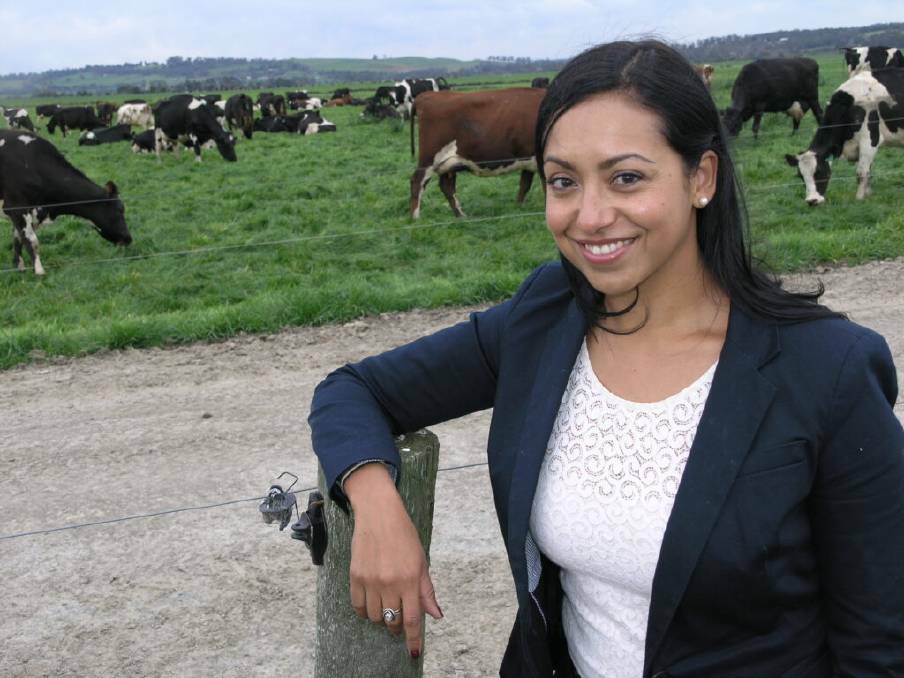
A new economic analysis predicts the south-west Victorian economy would grow by $40 million if the agricultural sector increased productive water usage by 10 per cent.
Subscribe now for unlimited access.
$0/
(min cost $0)
or signup to continue reading
The analysis by BDO EconSearch was commissioned by Food and Fibre Great South Coast, along with Warrnambool City Council, Moyne, Corangamite, and Southern Grampians Shire Councils, Wannon Water and Deakin University.
Food and Fibre GSC chief executive Natalie Collard said "water opportunity" indicated in the report was hugely exciting.
"It is without doubt the biggest opportunity for regional economic growth in the Great South Coast," she said.
The south-west is the major food and fibre region in the state. The sector adds $1.2 billion each year to the south-west economy, nearly a quarter of the total.
Of that $1.2 billion, meat and animal fibres make up just over $500 million, while dairy adds just under $500 million.
The remaining $200 million is contributed by grain crops, "forest products" and prepared foods.
The sector also contributes three in 10 south-west jobs, with 6400 people working in meat and fibre and another 4000 working in dairy in the region.
In a sector that relies so heavily on growing things, water is the most essential commodity. More productive water ought to mean more agricultural output.
The BDO analysis found 10 per cent more water would expand irrigated land in the south-west by a massive 1300 hectares. Most of the gain would apply to dairy-producing land.
The report found that translated to a $26 million rise in annual dairy production for the region.
IN OTHER NEWS:
South-west Victoria already contributes nearly a quarter of Australia's national dairy production.
The benefits of higher agricultural yields would also have flow-on effects for employment, not only in farming, but also in manufacturing and retail sectors.
The report found the change in water use would add 395 full-time equivalent jobs, with 164 in primary production, 52 in manufacturing and 178 in flow-on business activity.
It would be easy to assume south-west producers are using as much water as they can, but Ms Collard said there were many areas that could be improved.
Food and Fibre GSC produced its own 18-point plan on water policy reform that contains a number of ideas for boosting access to productive water for south-west farmers.
One of the most crucial improvements would be "a project mapping the surface and ground water across the region", she said.
Ms Collard said water authorities like Wannon Water should also manage an open database listing all regional water sources and their details.
That would allow farmers to work on an even playing field when it came to licensing.
"But it's not just about new water. It's also exploring the tools, technologies and practices that will enable us to make the most out of every drop of water we have," she said.
Ms Collard said Food and Fibre GSC had undertaken a separate analysis that suggested the economic benefits of a 10 per cent productive water increase could be as much as $54 million.
Our journalists work hard to provide local, up-to-date news to the community. This is how you can access our trusted content:
- Bookmark https://www.standard.net.au/
- Make sure you are signed up for our breaking and regular headlines and newsletters
- Follow us on Facebook, Twitter, Instagram and LinkedIn
- Tap here to open our Google News page.
- Join our Courts and Crime Facebook group and our dedicated Sport Facebook group
- Subscribe
Now just one tap with our new app: Digital subscribers now have the convenience of faster news, right at your fingertips with The Standard:
Have you signed up to The Standard's daily newsletter and breaking news emails? You can register below and make sure you are up to date with everything that's happening in the south-west.


